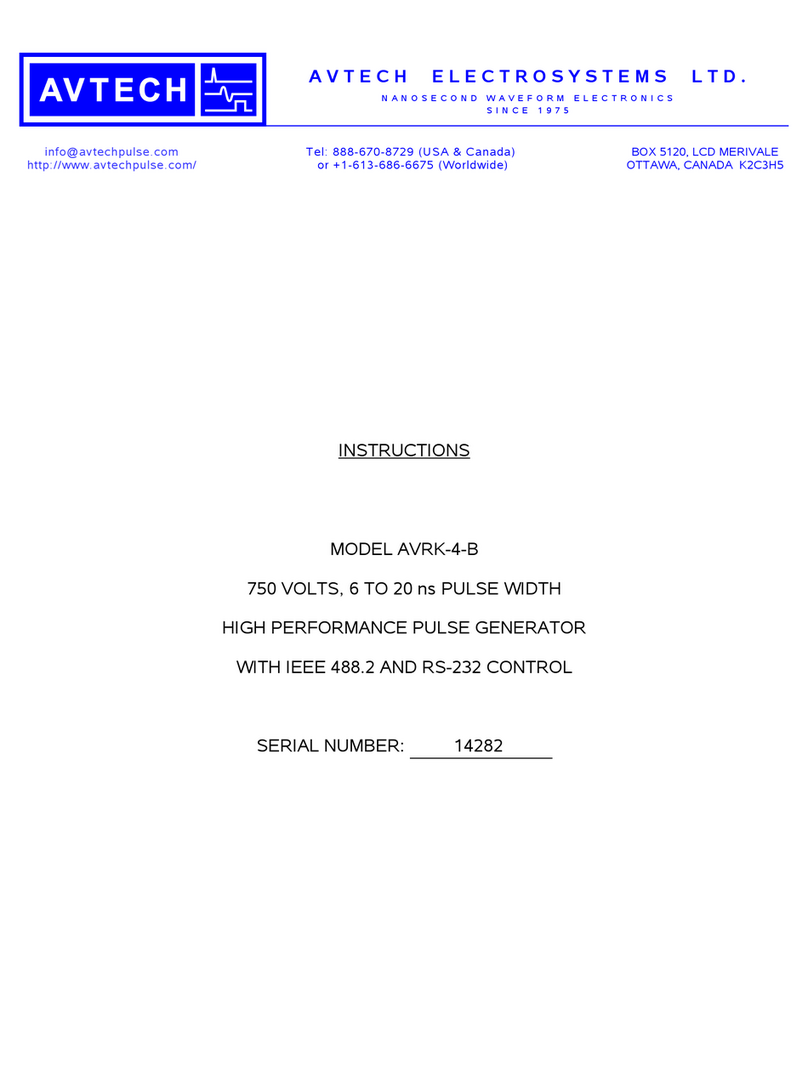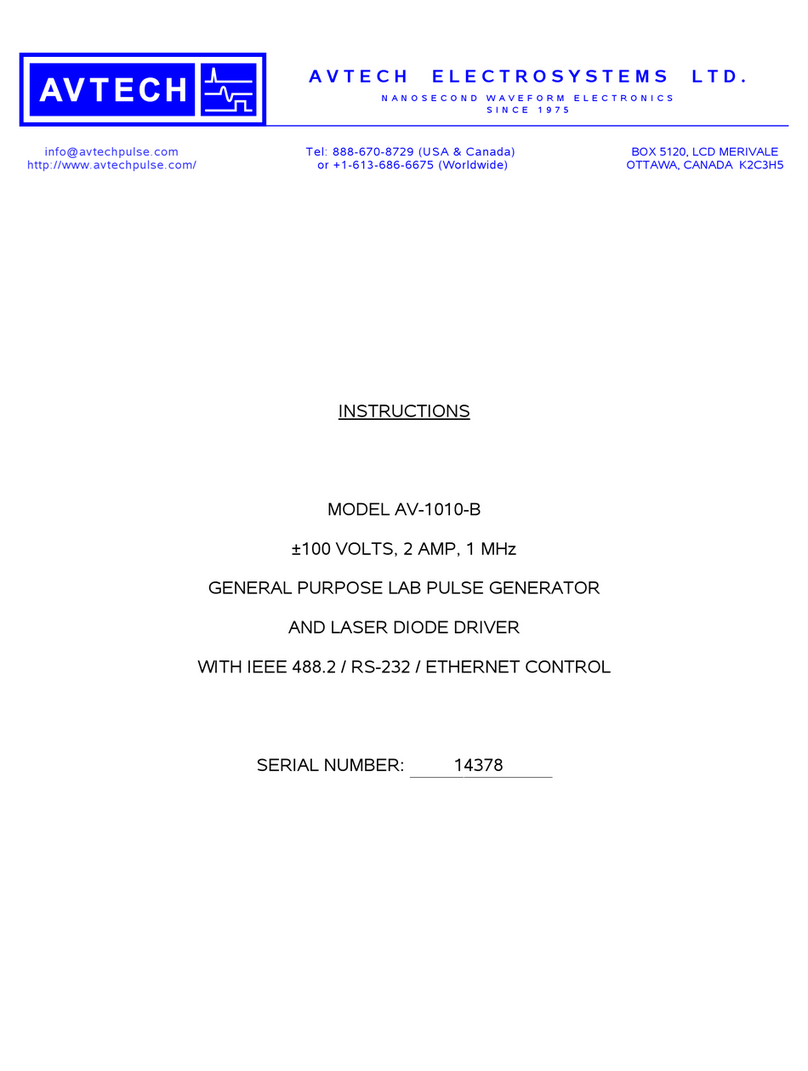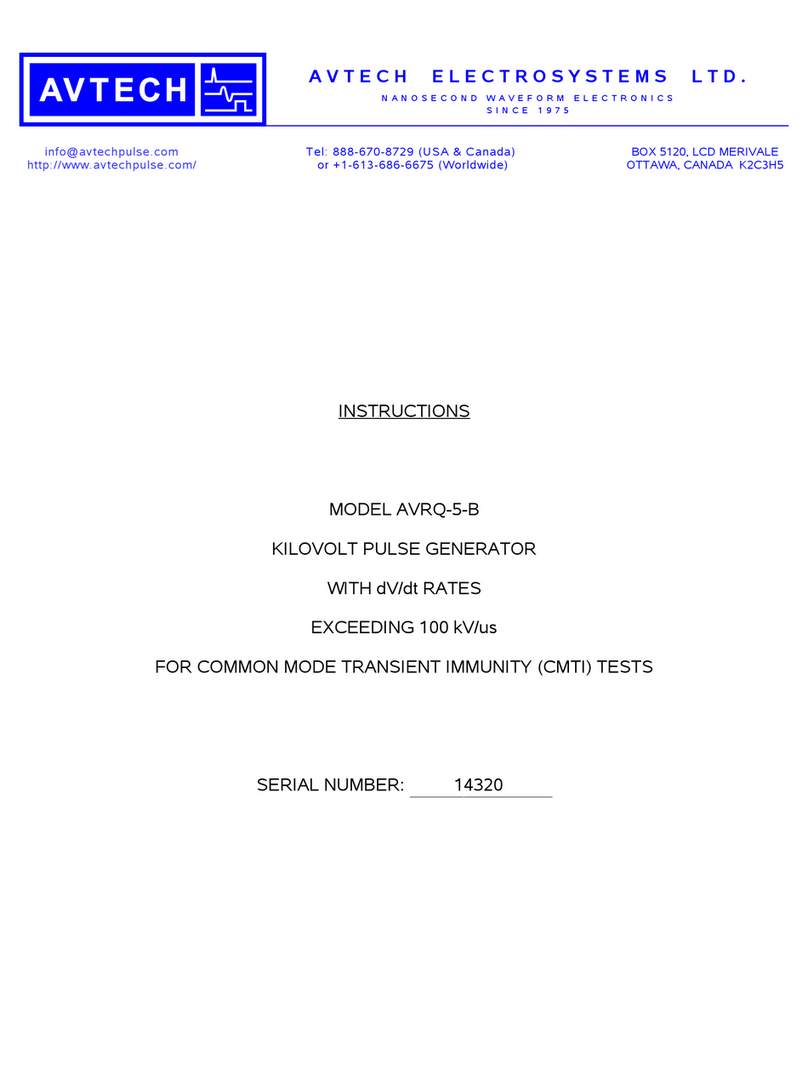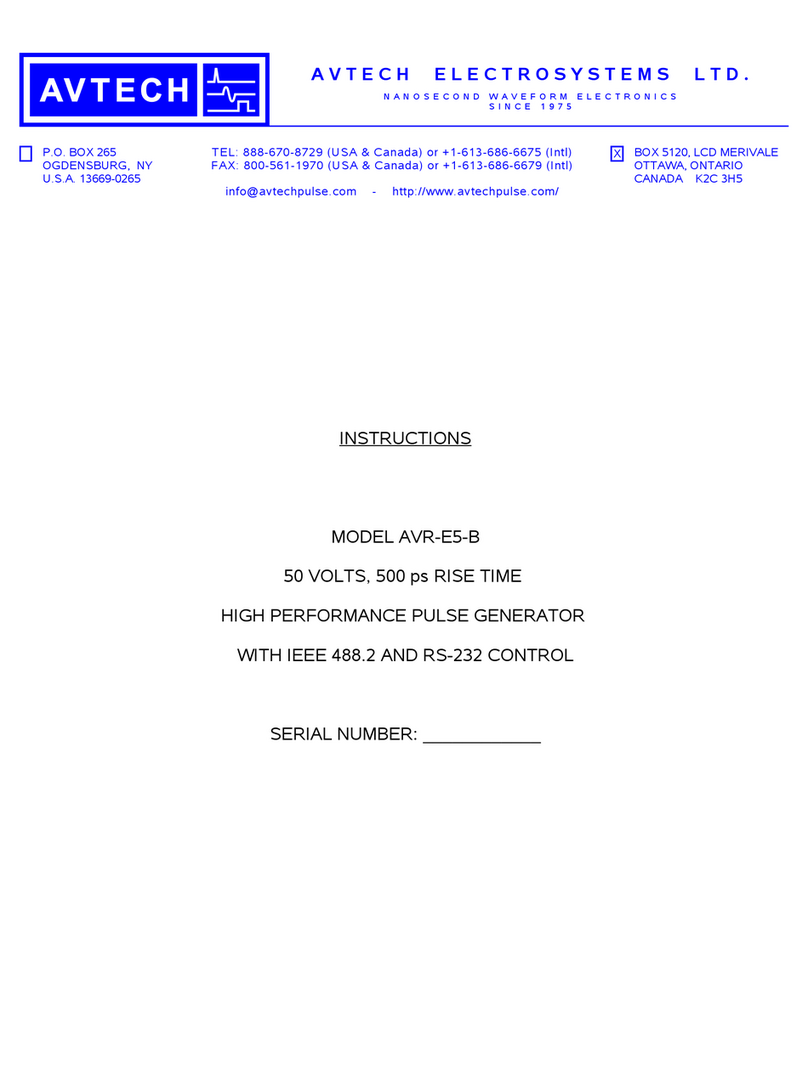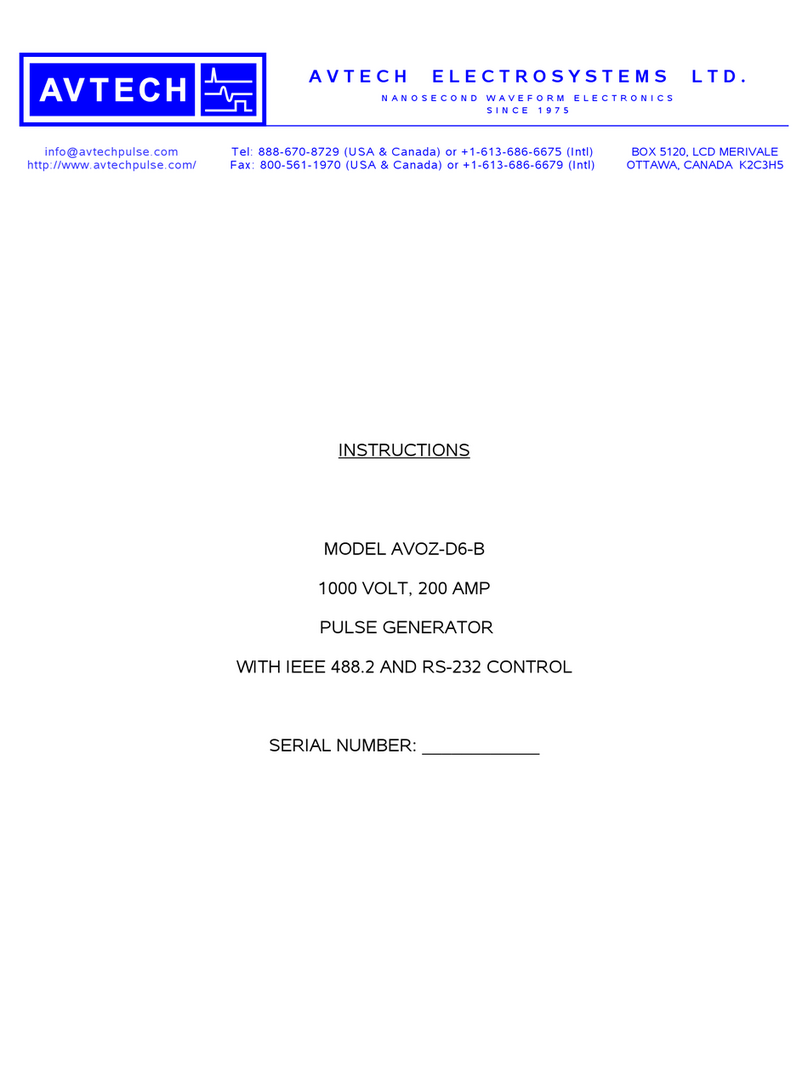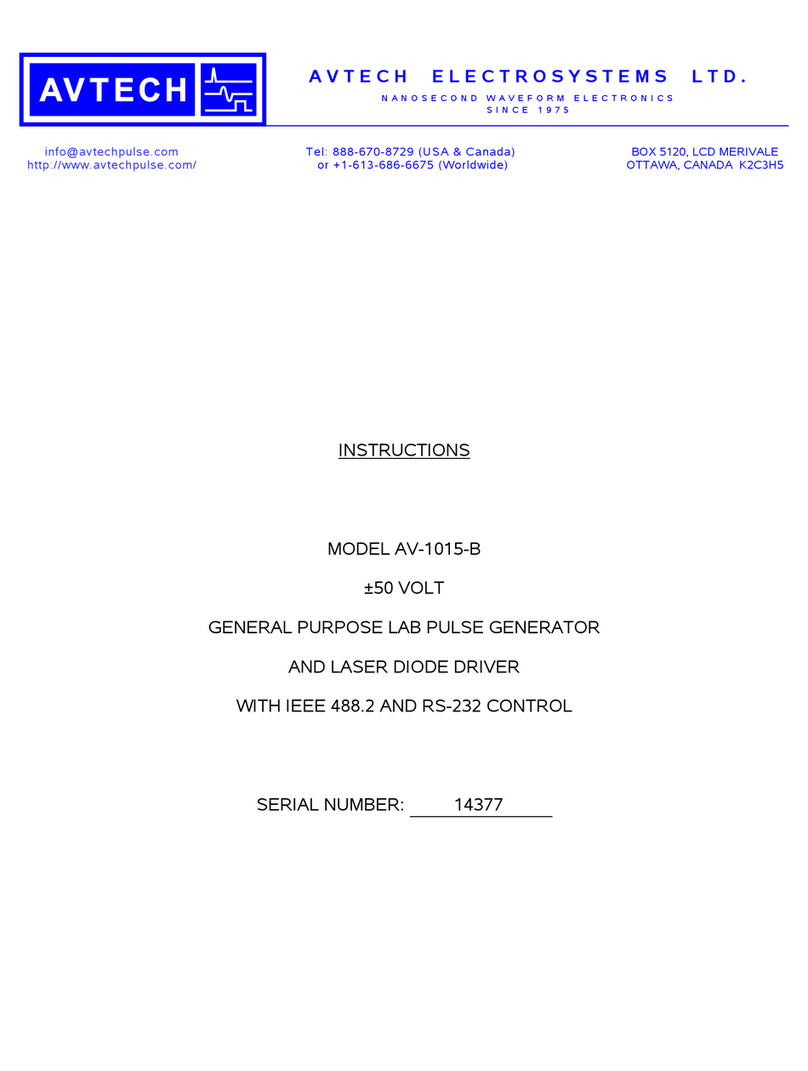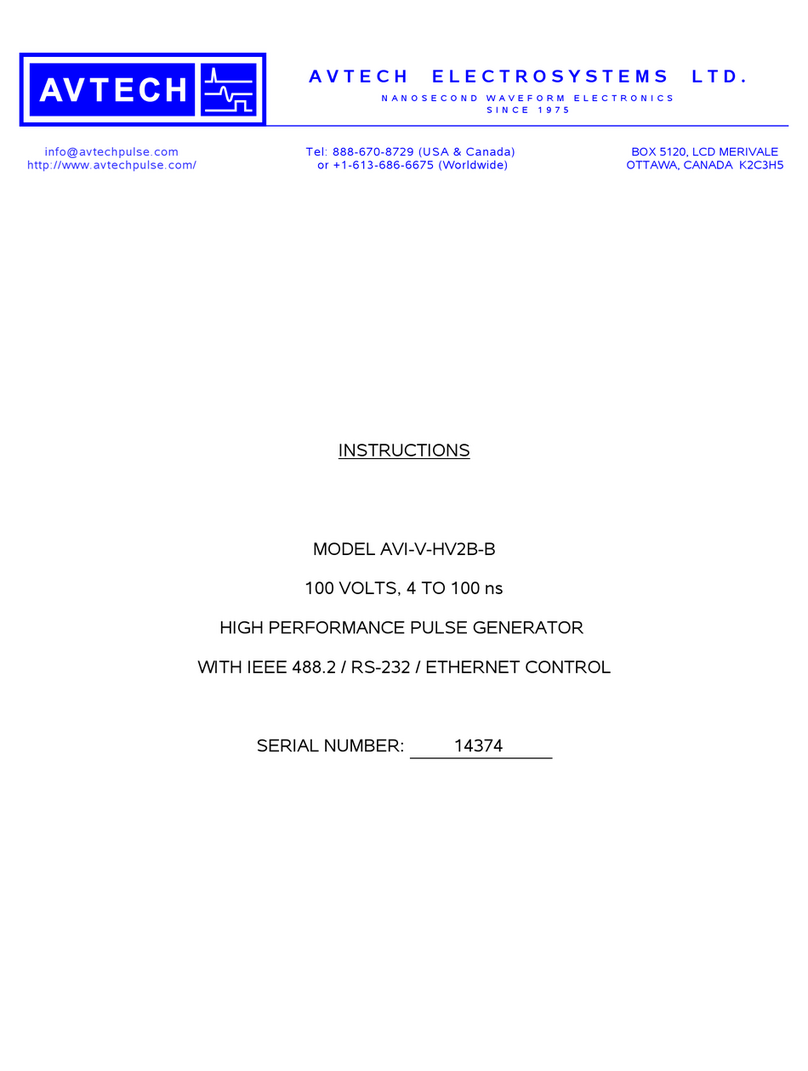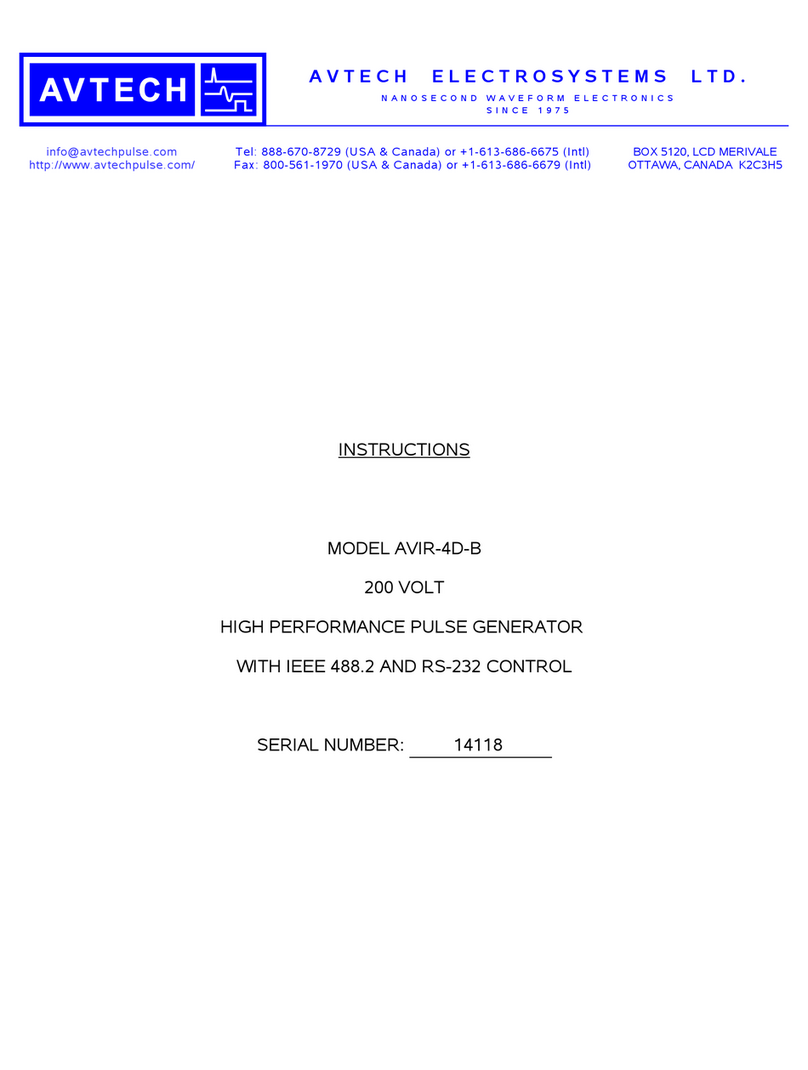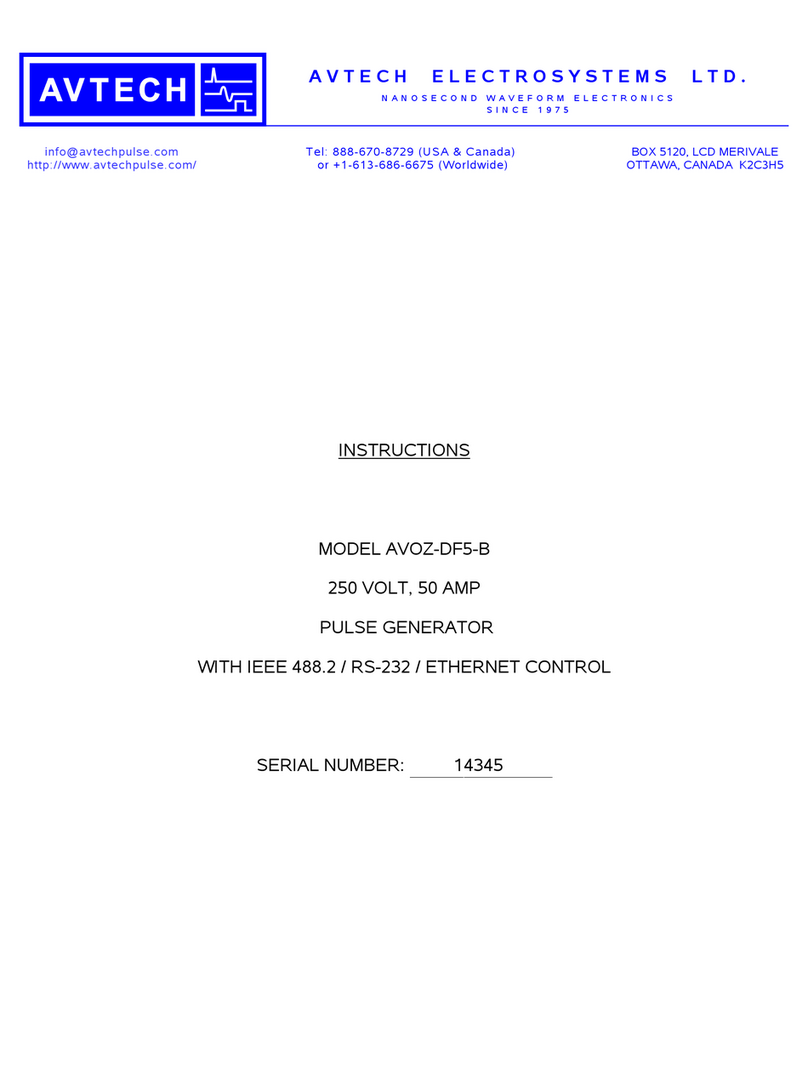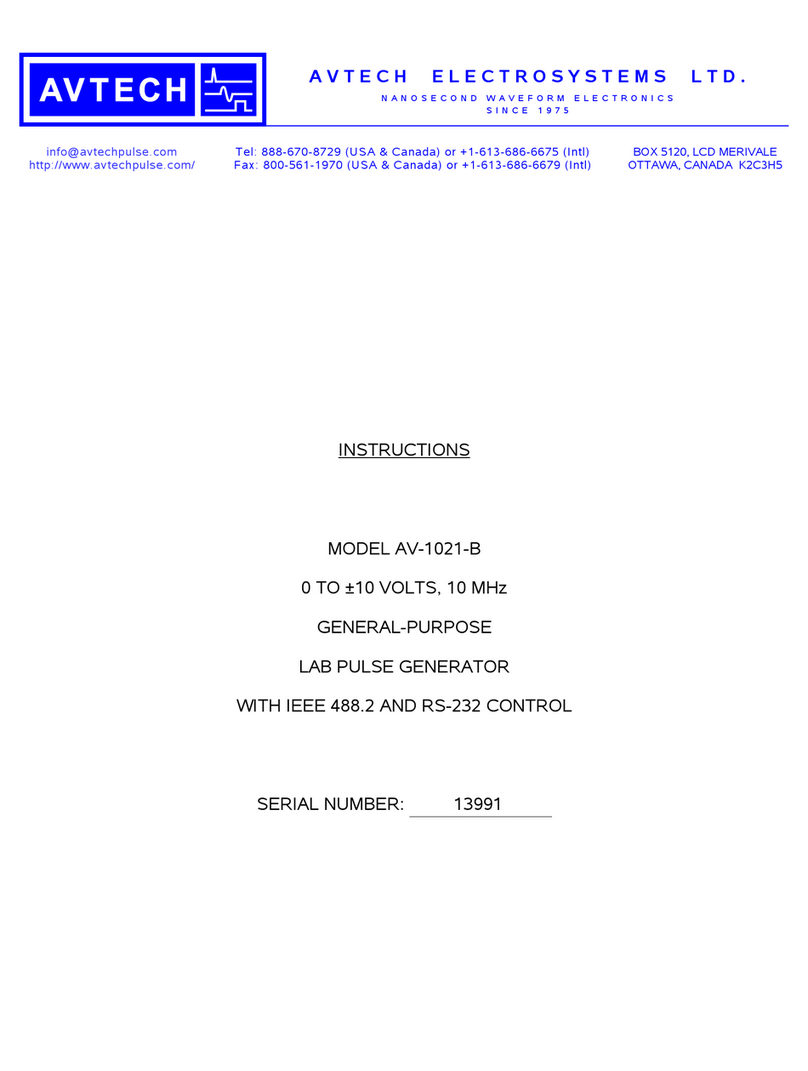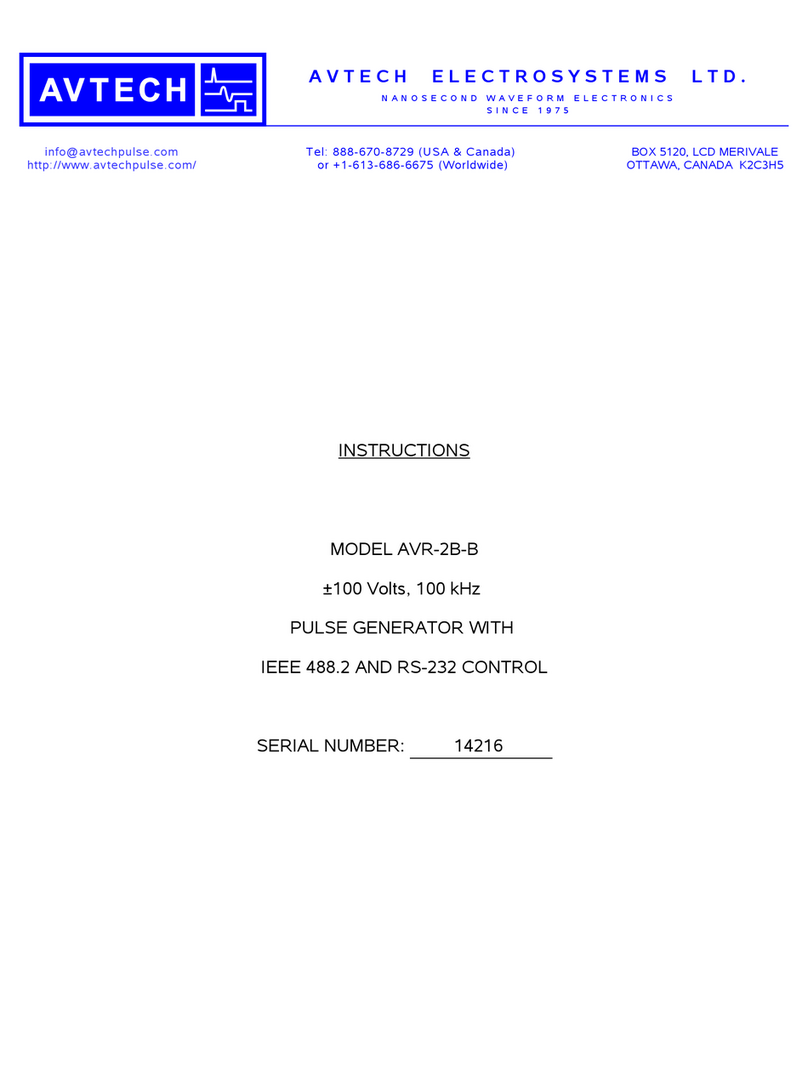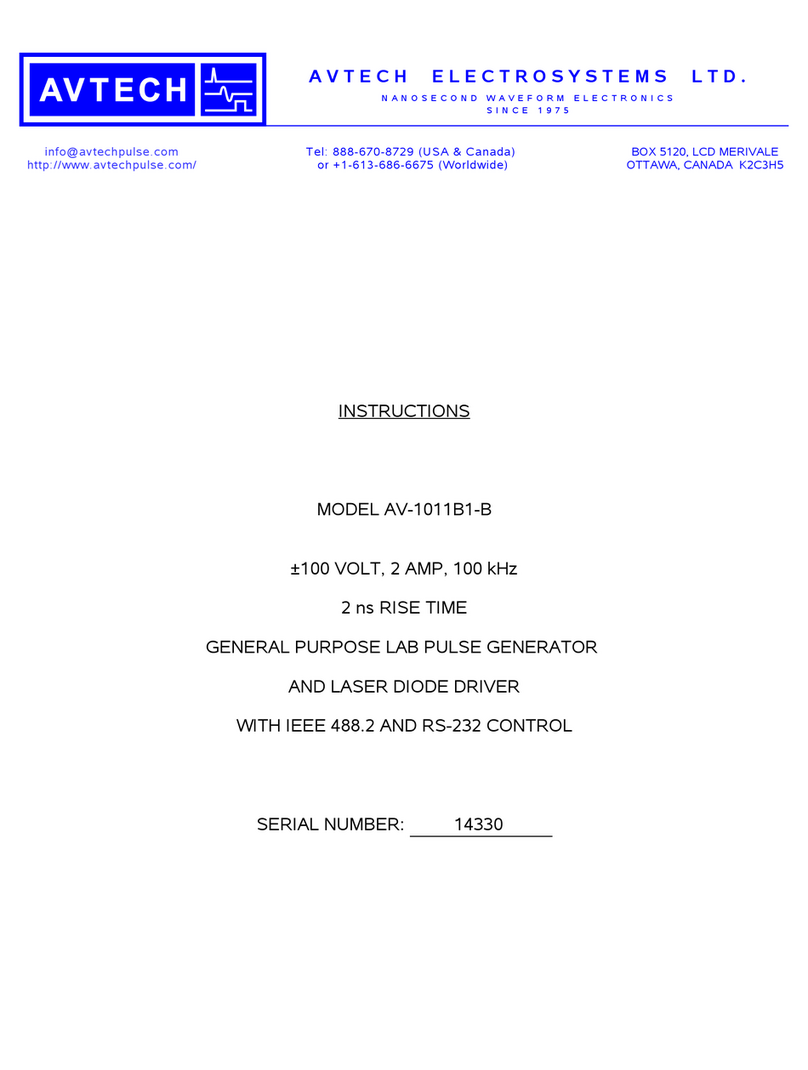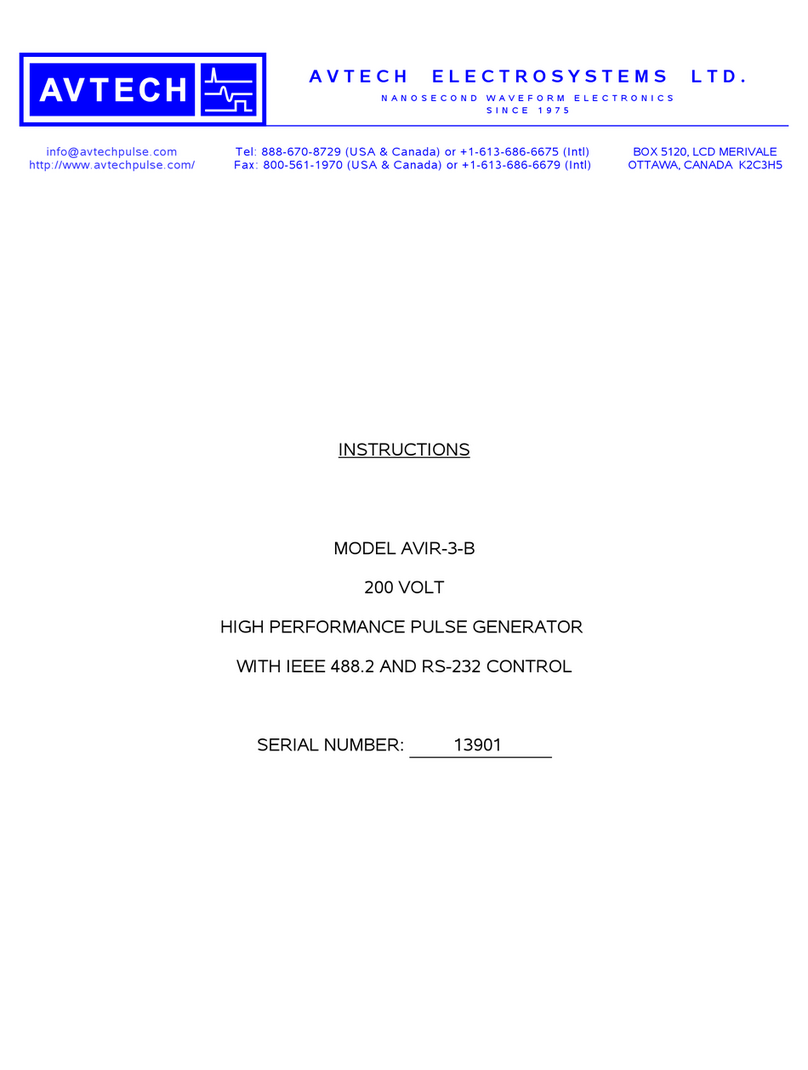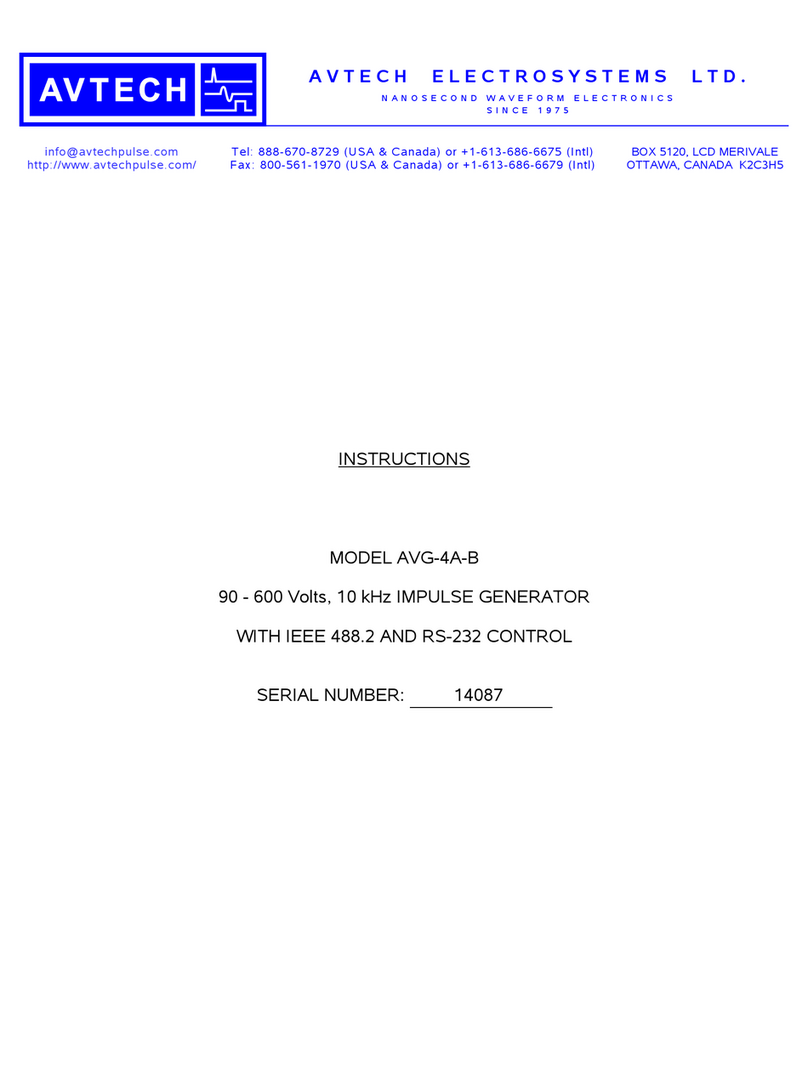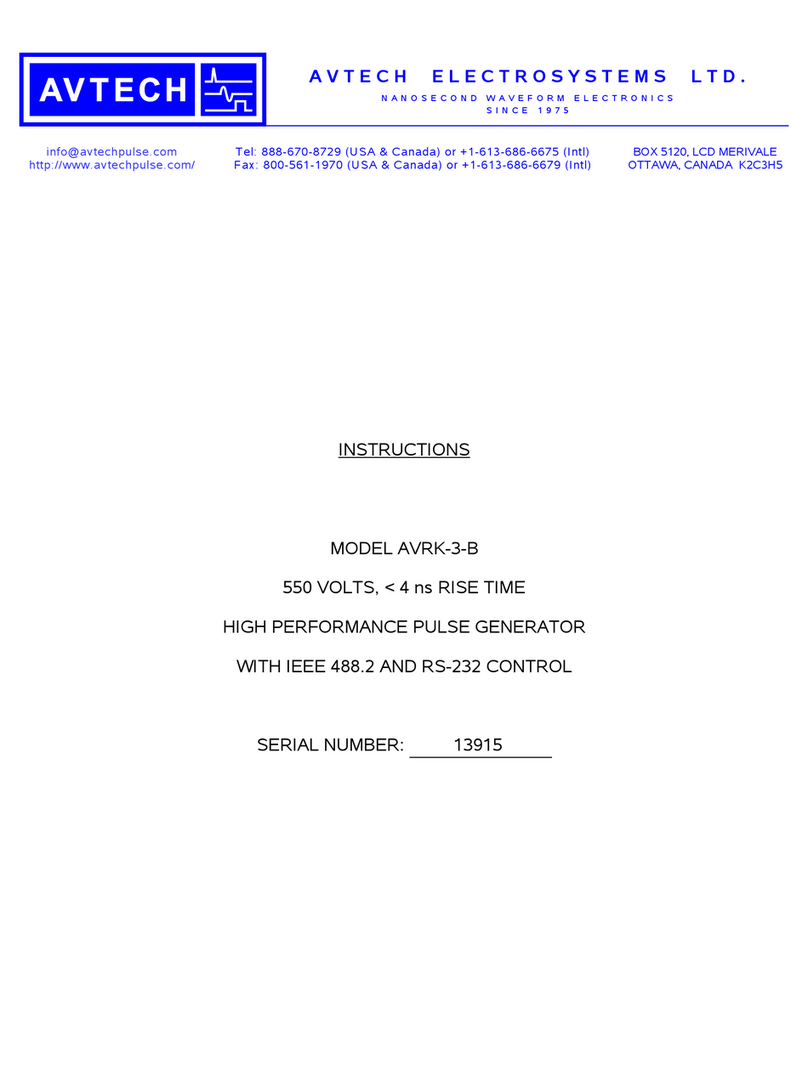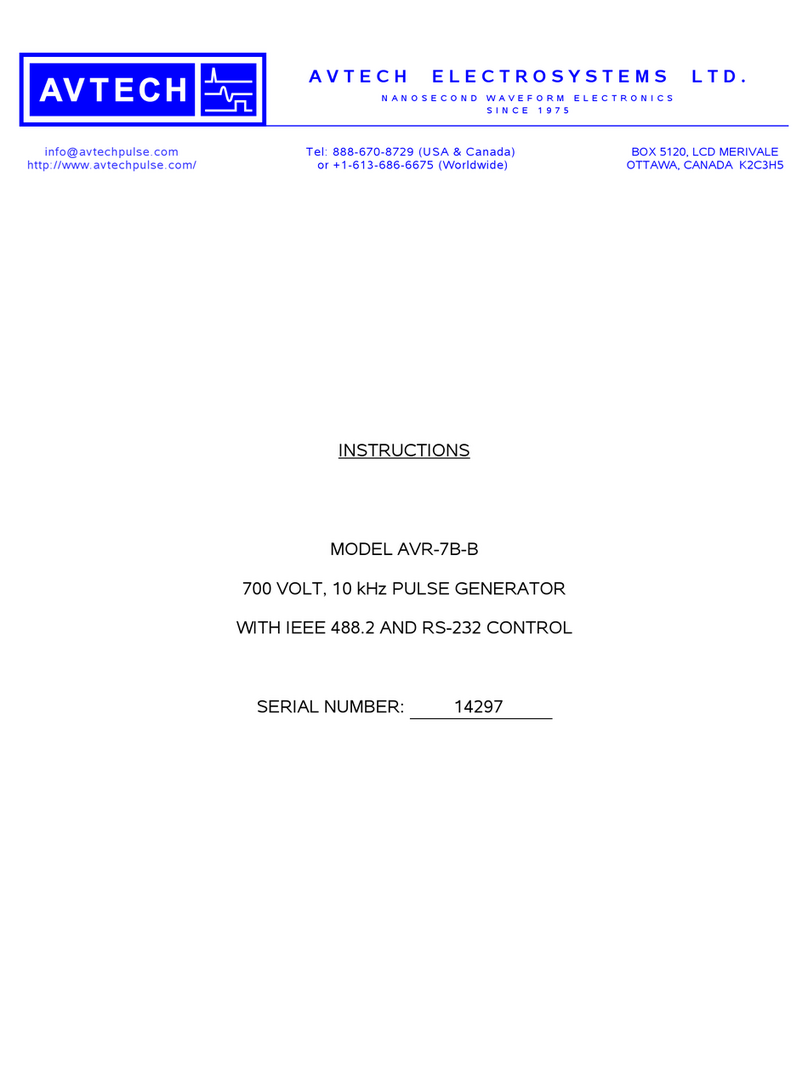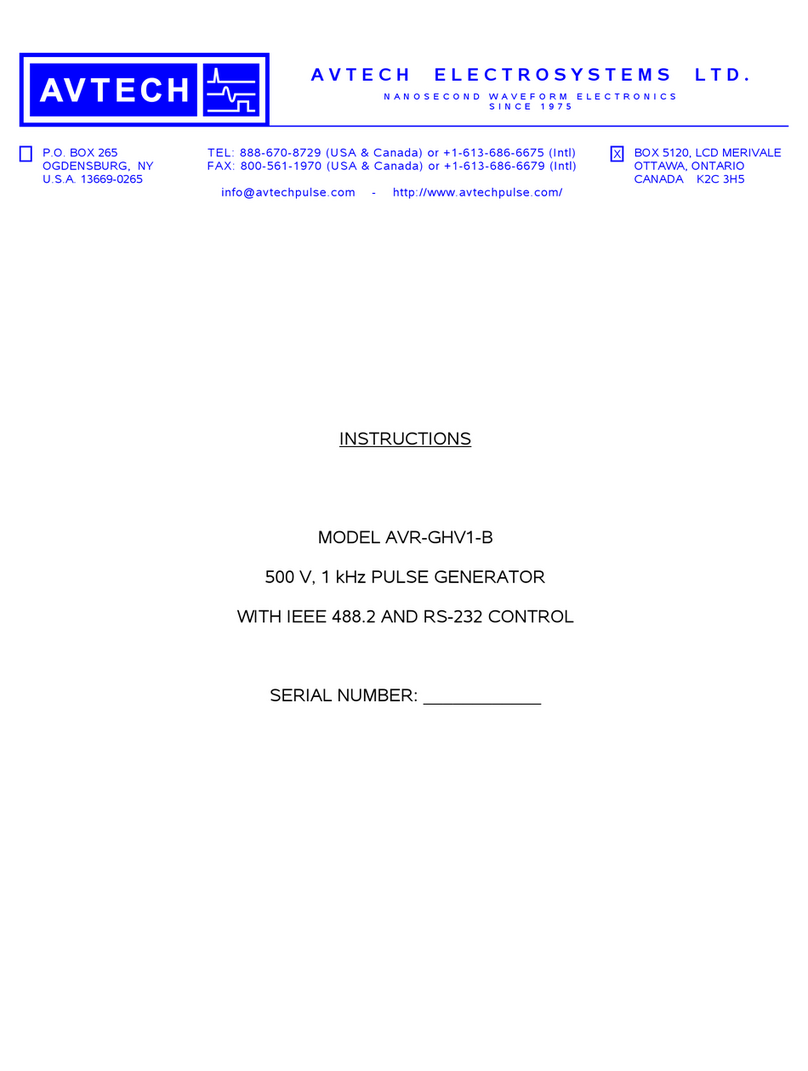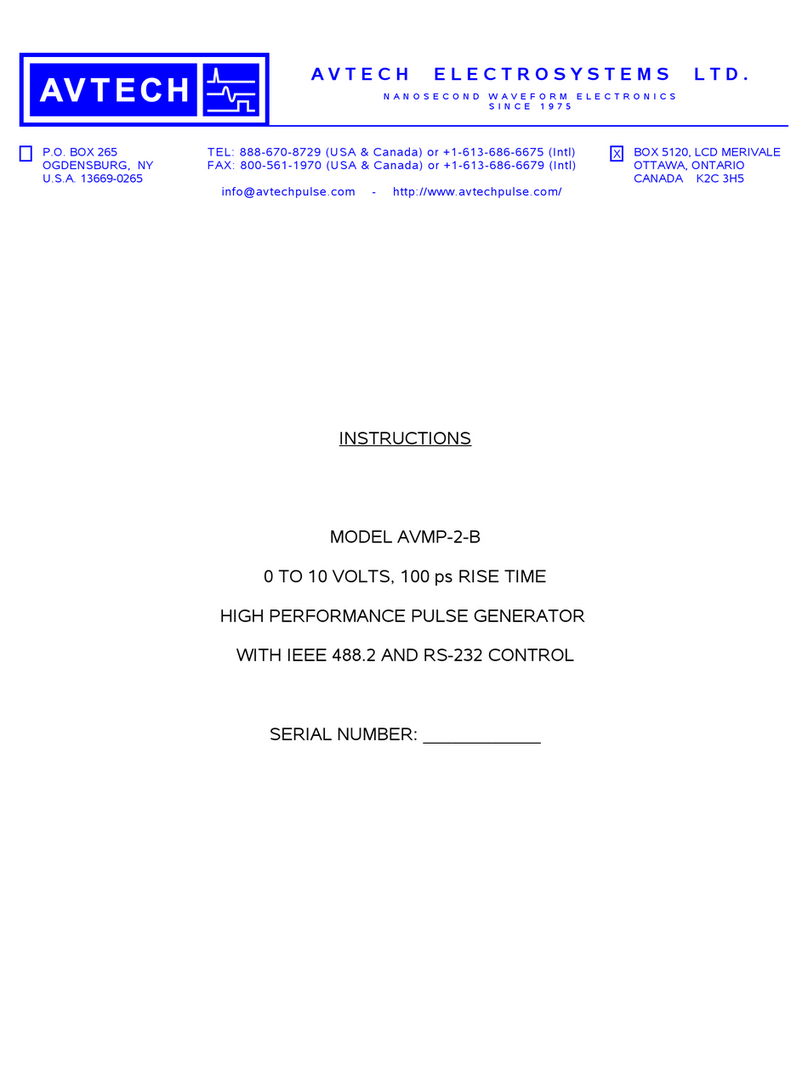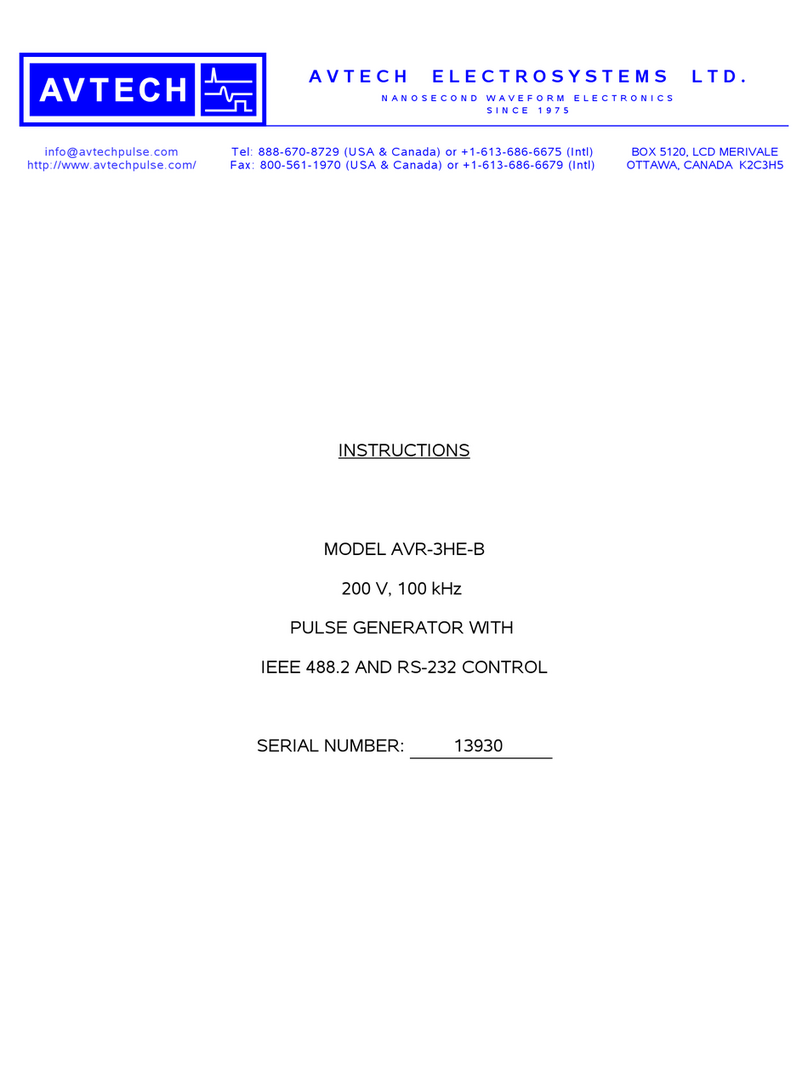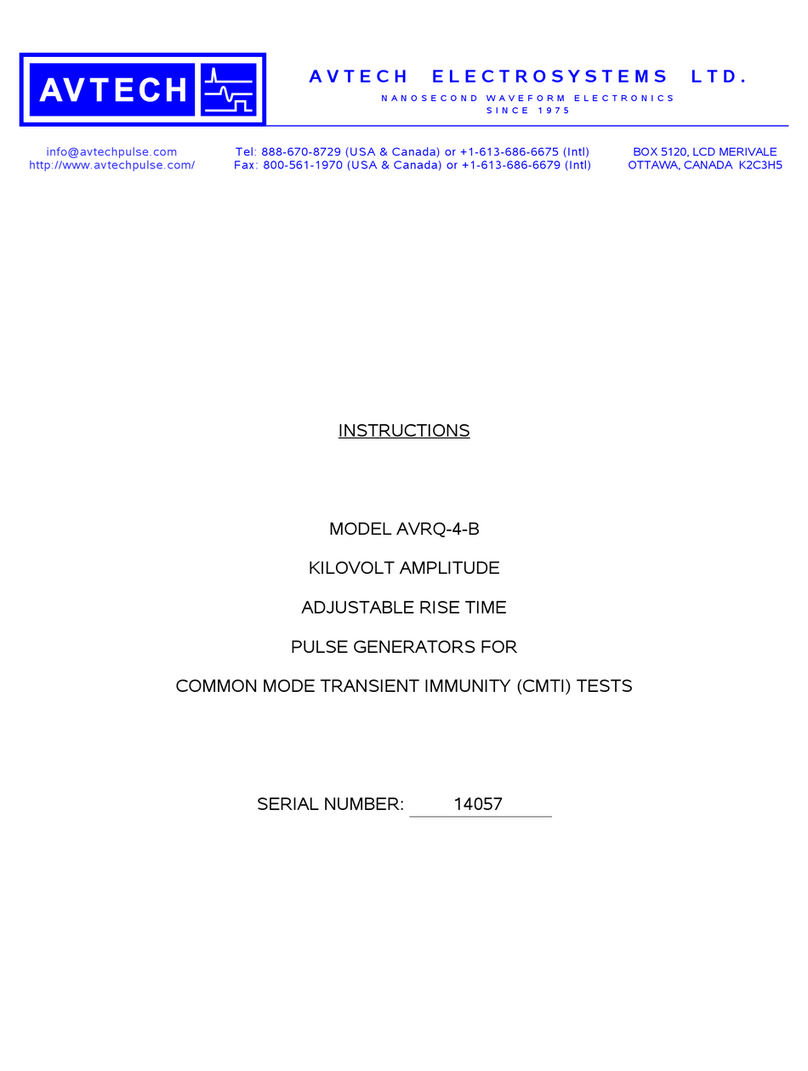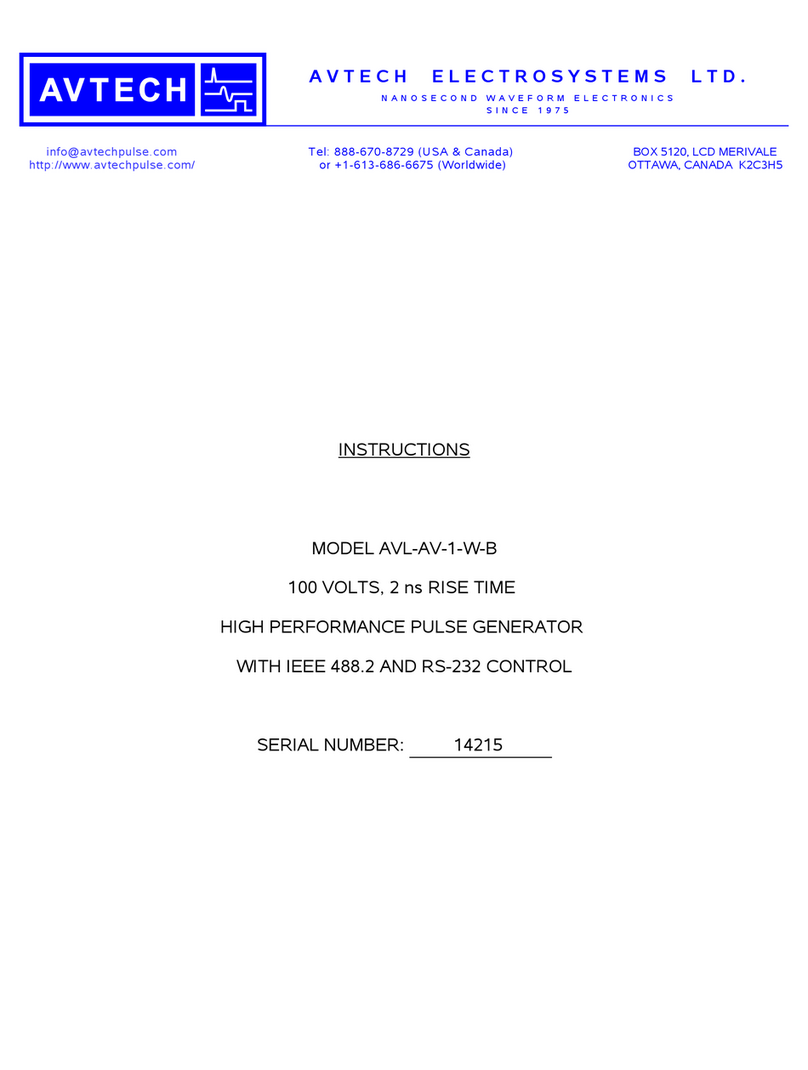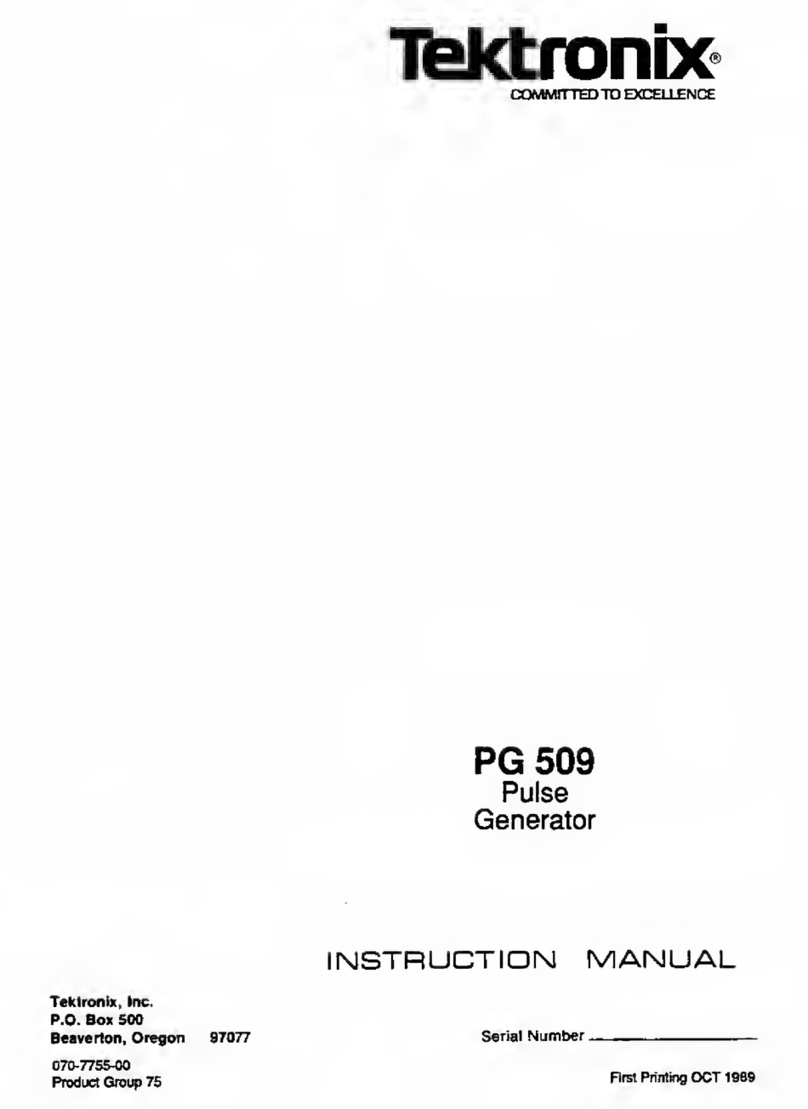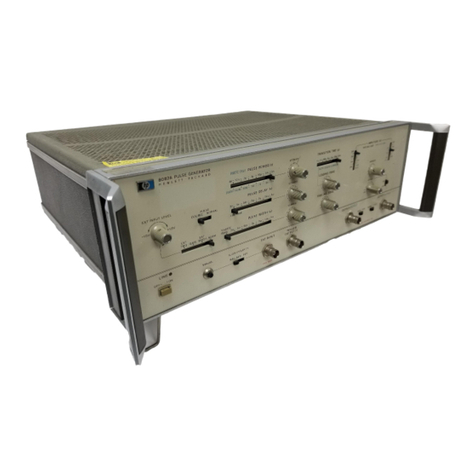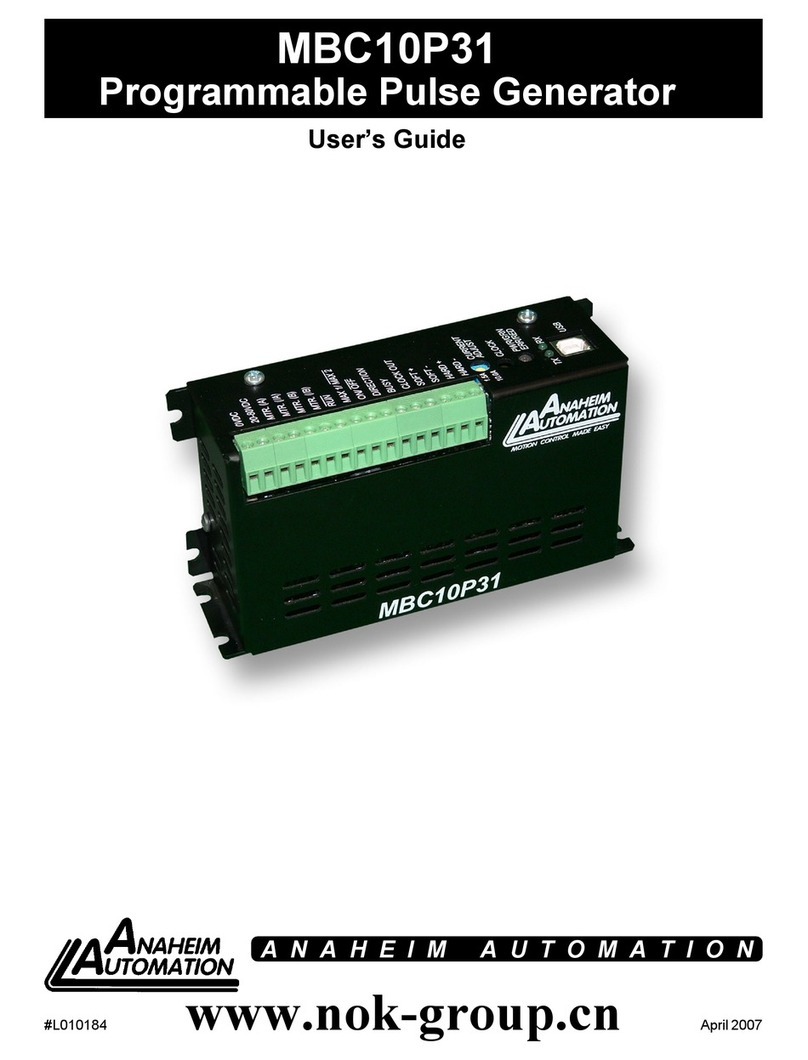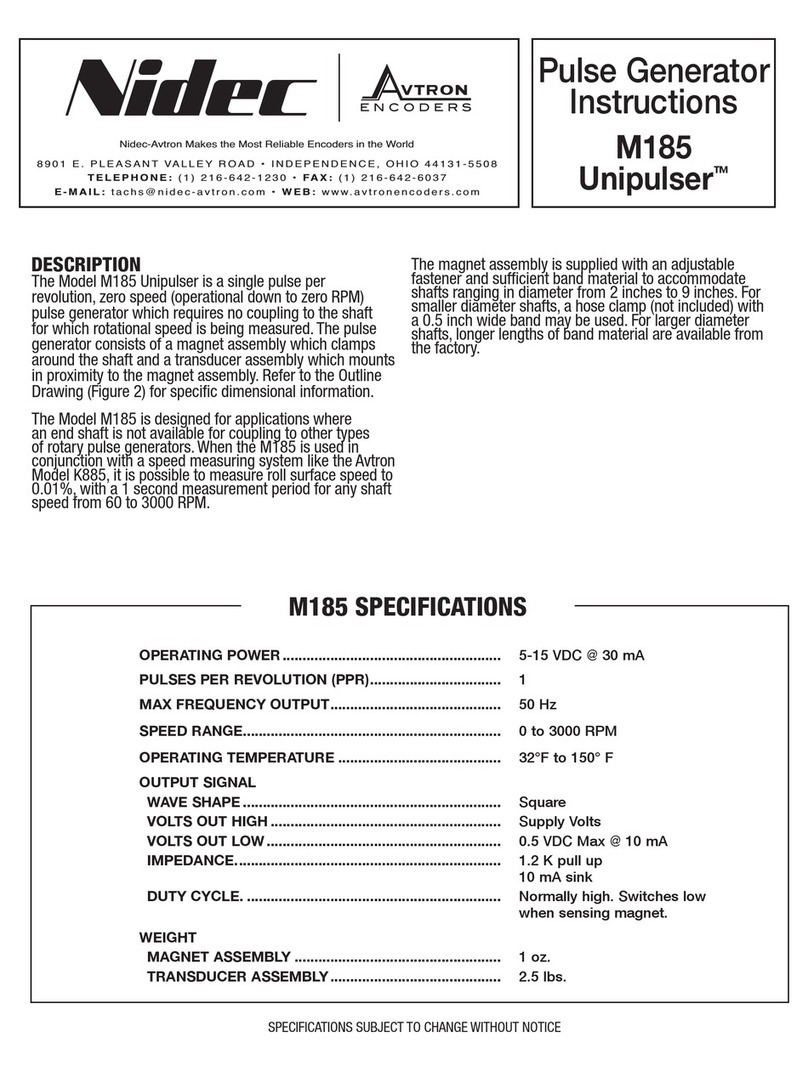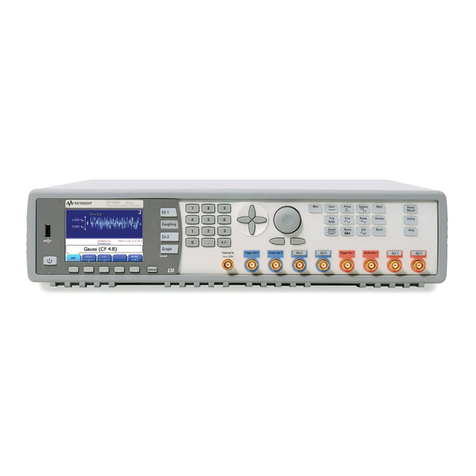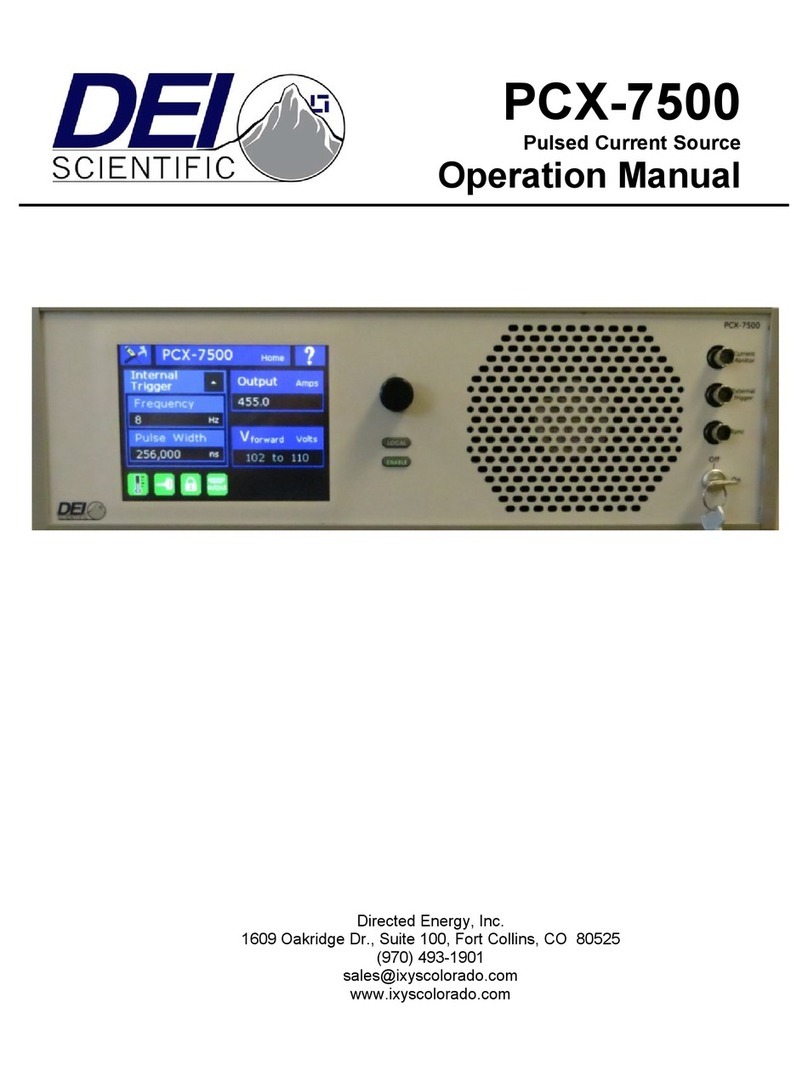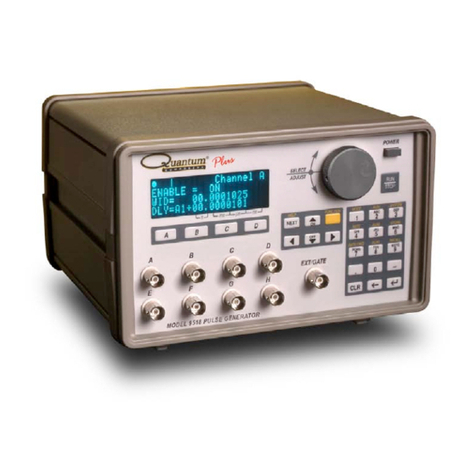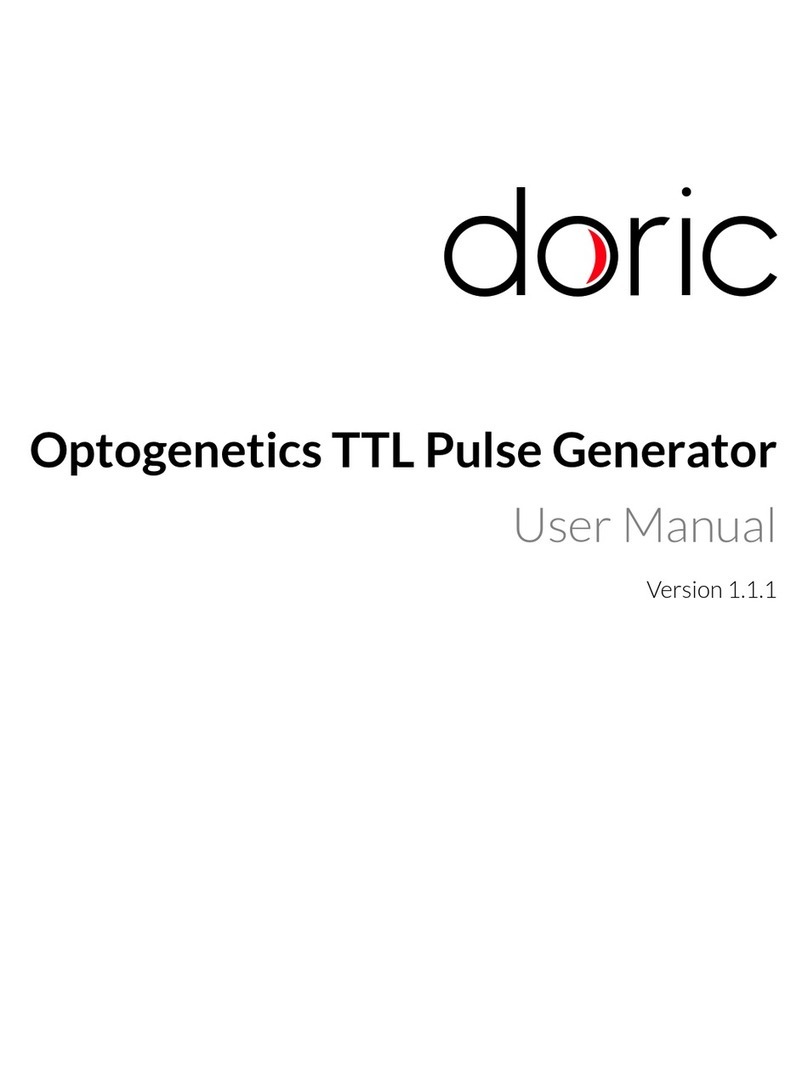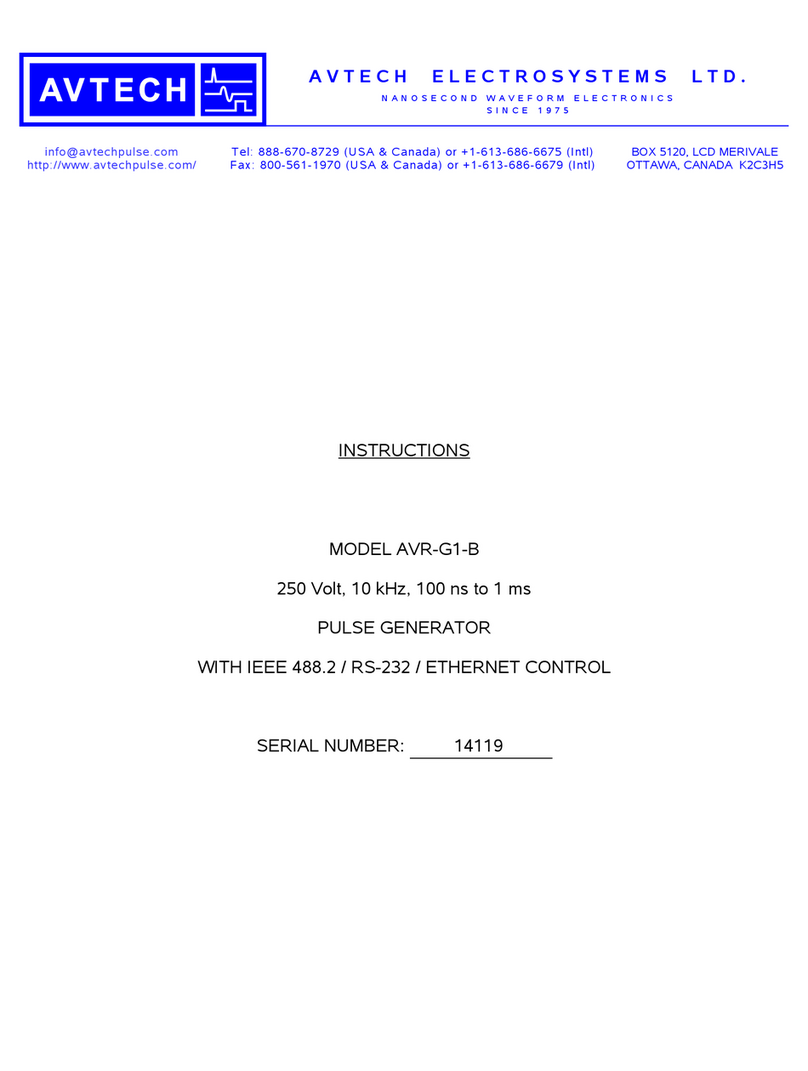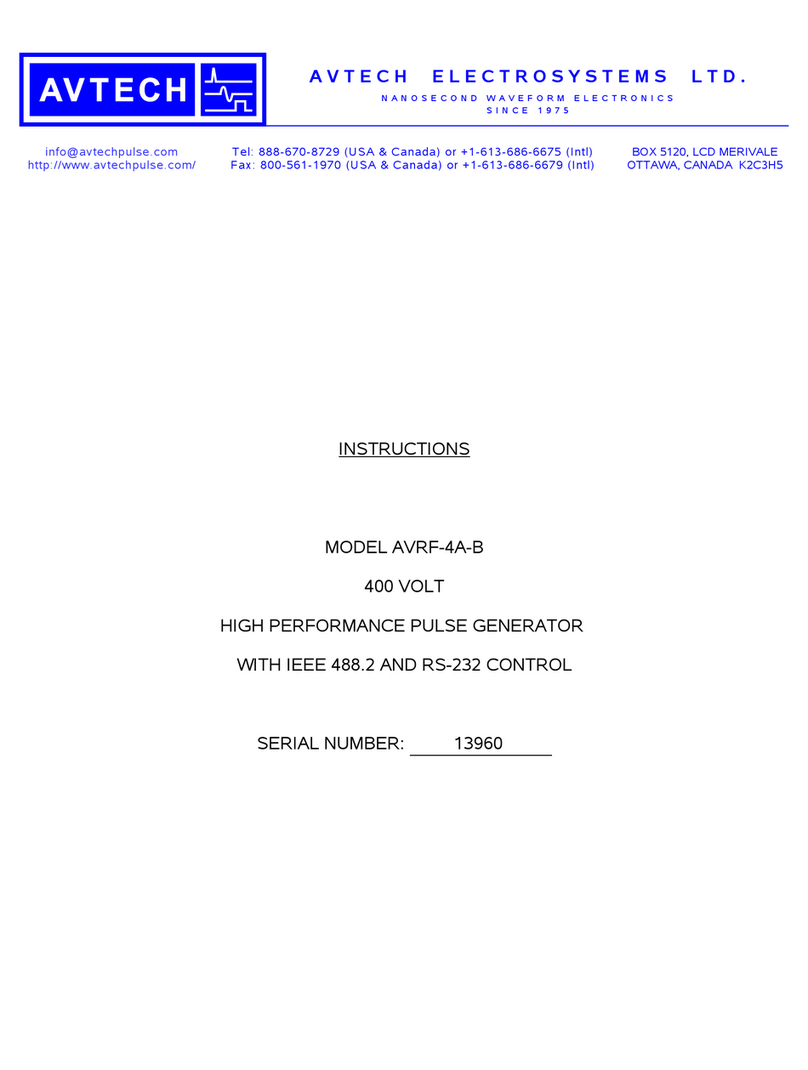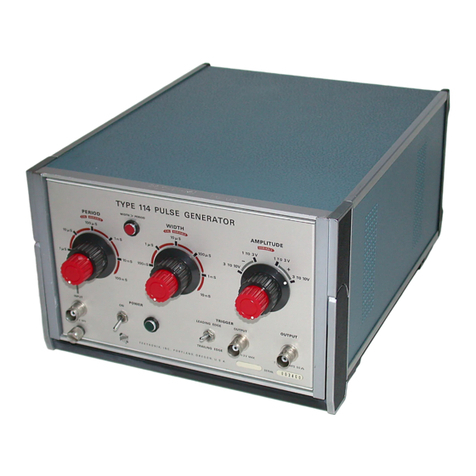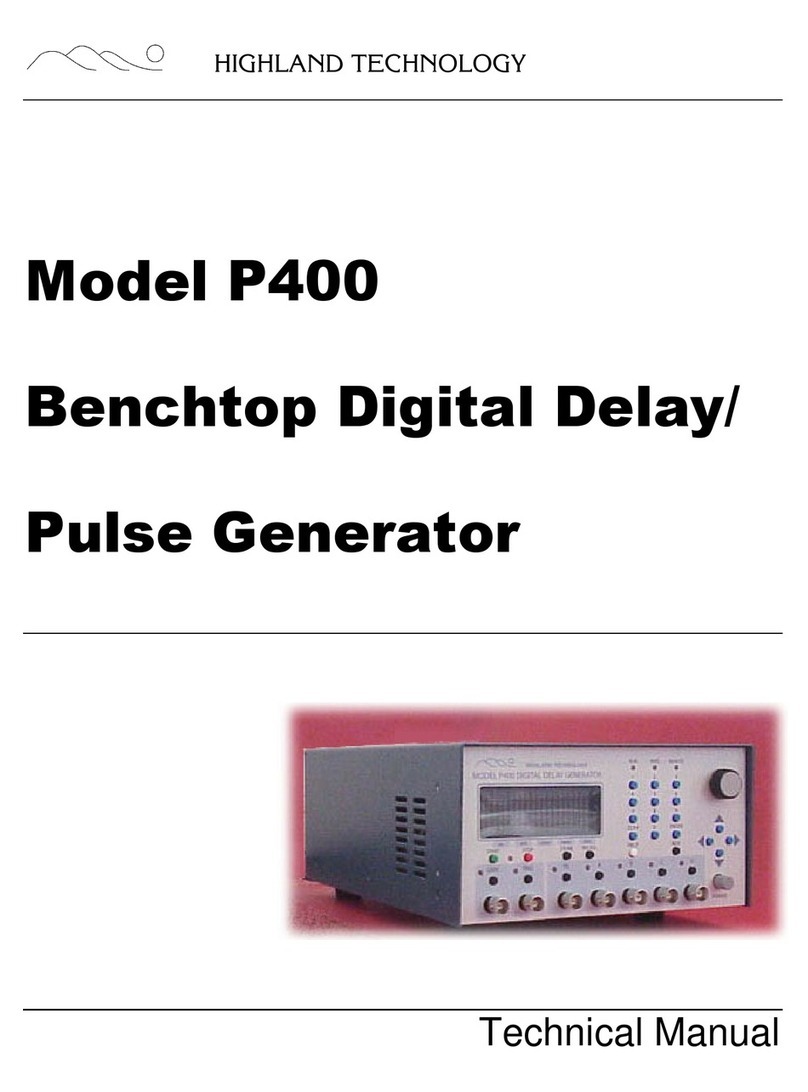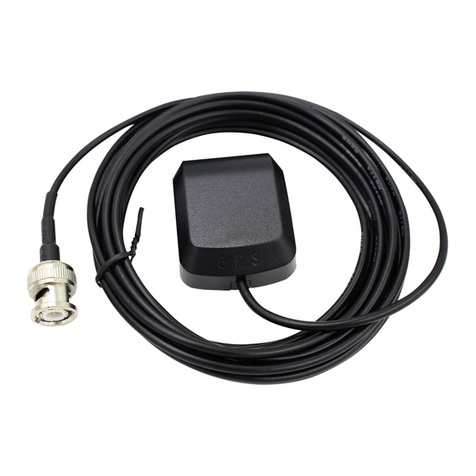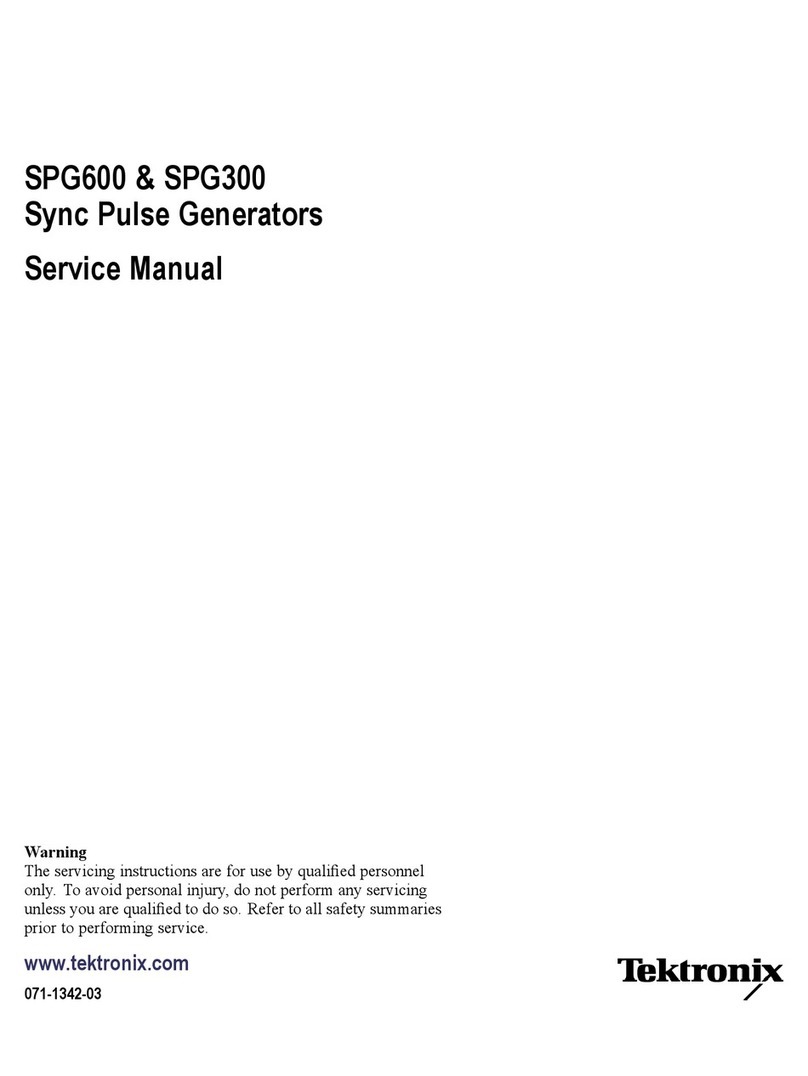SPECIFICATIONS
Model1AVIR-2-B
Amplitude2,3,6 < 20 to 200 Volts
Required load impedance 50Ω7
Pulse width (FWHM) 3 - 10 ns
Rise time (20%-80%) ≤ 1.5 ns
Fall time (80%-20%) ≤ 3 ns
PRF 0 to 20 kHz
Polarity4Positive or negative or both (specify)
GPIB & RS-232 control1Standard on -B units
LabView Drivers check http //www.avtechpulse.com/labview for availability and downloads
Ethernet port, for remote
control using VXI-11.3,
ssh, telnet, & web
Included. Recommended as a modern alternative to GPIB / RS-232.
See http //www.avtechpulse.com/options/vxi for details.
Settings resolution The resolution of the timing parameters (pulse width, delay, period) varies,
but is always better than 0.15% of (|set value| + 20 ns).
The amplitude resolution is < 0.1% of the maximum amplitude.
Settings accuracy Amplitude ± 5% (plus ±2 V) after 10 minute warmup.
For pulse widths below ~10 ns, the amplitude accuracy degrades to ± 10% ± 10 V.
Delay, Period Typically ± (3% of setting ) ± (5 ns)
Pulse width Typically ± (3% of setting ) ± (2 ns), at maximum amplitude. As the
amplitude is reduced, the pulse width may shift ± 5 ns. For high-accuracy applications
requiring traceable calibration, verify the output with a calibrated oscilloscope8.
DC offset or
bias insertion
Optional5. Apply required DC offset or bias in the range of
± 50 Volts (250 mA max) to back panel solder terminal.
Propagation delay ≤ 100 ns (Ext trig in to pulse out)
Jitter ± 35ps ± 0.015% of sync delay (Ext trig in to pulse out)
Trigger modes Internal trigger, external trigger (TTL level pulse, > 10 ns, 1 kΩ input impedance),
front-panel “Single Pulse” pushbutton, or single pulse trigger via computer command.
Variable delay Sync to Out 0 to 1.0 seconds, for all trigger modes (including external trigger).
Sync output +3 Volts, 100 ns, will drive 50 Ohm loads
Connectors Out SMA, Trig, Sync, Gate BNC
Power requirement 100 - 240 Volts, 50 - 60 Hz
Dimensions H x W x D 100 × 430 × 375 mm (3.9 × 17 × 14.8”)
Rack-mount kit Optional. To specify, add the -R5 suffix to the model number.
Temperature range +5°C to +40°C
1) -B suffix indicates IEEE-488.2 GPIB and RS-232 control of amplitude, pulse width, PRF and delay (see http //www.avtechpulse.com/gpib for details).
2) For analog electronic control (0 to +10V) of amplitude, suffix the model number with -EA. Includes standard front-panel controls. Not available on
AVIR-4 models.
3) For operation at amplitudes of less than 10% of full-scale, best results will be obtained by setting the amplitude near full-scale and using external
attenuators on the output.
4) Indicate desired polarity by suffixing model number with -P or -N (i.e. positive or negative) or -PN for dual polarity option. Polarity reversal is achieved
by means of a two-position switch.
5) For externally-applied DC offset option suffix model number with -OS. For internally-generated DC offset option (0 to ±5V) add suffix -OT.
6) The maximum amplitude decreases by 15% for repetition rates above 30 kHz. The maximum amplitude also decreases by an additional 15% for
pulse widths below 3 ns.
7) A 50 Ohm load is required. Other loads may damage the instrument. Consult Avtech (info@avtechpulse.com) if you need to drive other load
impedances.
8) These instruments are provided with a basic calibration checksheet, showing a selection of measured output parameters. These measurements are
performed with equipment that is calibrated on a regular basis by a third-party ISO/IEC 17025 2005 accredited calibration laboratory. However,
Avtech itself does not claim any accreditation. For applications requiring traceable performance, use a calibrated measurement system rather than
relying on the accuracy of the pulse generator settings.
